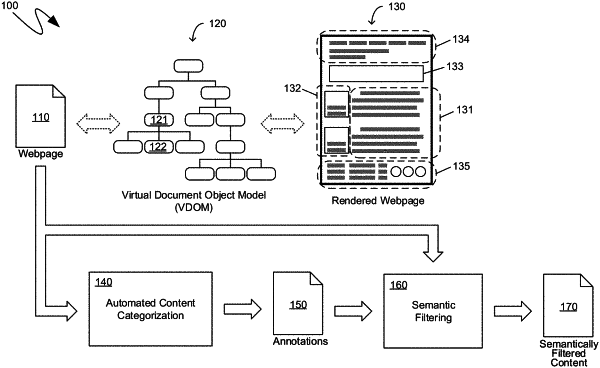| CPC G06N 3/08 (2013.01) [G06F 9/30036 (2013.01); G06F 16/9577 (2019.01); G06F 40/30 (2020.01); G06N 3/045 (2023.01)] | 19 Claims |

|
1. A method of improving automated structured textual content categorization accuracy, the method comprising:
providing a first vector to a first neural network, where the first vector corresponds to a first discrete portion of the structured textual content;
immediately after providing the first vector to the first neural network, providing a second vector to the first neural network, where the second vector corresponds to the second discrete portion of the structured textual content, where the second vector is provided to the first neural network immediately after the first neural network is provided to the first neural network due to the second discrete portion neighboring the first discrete portion in the structured textual content, where the first neural network generates a third vector that corresponds to the first discrete portion based upon the first vector and the second vector, and further where the first neural network generates a fourth vector that corresponds to the second discrete portion based upon the first vector and the second vector;
providing the third vector to a second neural network, where the second neural network outputs a fifth vector that corresponds to the first discrete portion, and further where the fifth vector includes first values for categories that are assignable to discrete portions of the structured textual document;
providing the fourth vector to the second neural network, where the second neural network outputs a sixth vector that corresponds to the second discrete portion, and further where the sixth vector includes second values for the categories;
categorizing the first discrete portion in accordance with the first values of the fifth vector output by the second neural network; and
categorizing the second discrete portion in accordance with the second values of the sixth vector output by the second neural network.
|